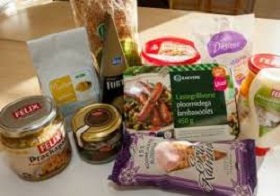Analytics, Baltic Export, Estonia, Foodstuff, Good for Business
International Internet Magazine. Baltic States news & analytics
Friday, 19.04.2024, 22:52
H1 output of Estonia's food industry worth EUR 800 mln
 Print version
Print version |
|---|
Sales revenue for the period grew 6 percent and accounted for 15% of the total revenue of the manufacturing industry. The biggest branches of the food sector were dairy industry, which accounted for 21% of total output, and meat industry, which accounted for 17%. The share of the beverage industry was 12%, the Estonian Food Industry Association said.
The costs of the food industry in the first six months of the year amounted to 964.2 mln euros, 4% more than in the same period a year ago. The increase in costs has happened on the back of higher input prices, which is reflected also in an increase in the food sector's producer prices.
As before,wage pressure arising from labor shortage is pushing costs higher. Labor costs, which account for almost a quarter of total costs, grew 6 percent year over year. The sector accounts for 13% of the output of the manufacturing sector and directly gives work to nearly 15,000 people.
"The first half-year rather has been good for food producers," chairman of the association Sirje Potisepp said in a press release. Output volumes have grown, yet sales revenue has not grown by as much due to an increase in costs.
"It is positive that we are making products with an ever greater added value. Compared with the same period last year, the increase in added value is 14%, which is half the European Union average," Potisepp said.
Investments by the food sector meanwhile have decreased compared with the first six moths of 2018. That may be caused by instability of the tax environment, but also developments on global markets.
"I hope that in the second half-year the share of investments will grow, because the sector requires investments," Potisepp added.
Investments made in the six months amounted to 34 mln euros. The biggest investor was the beverage industry with 6.5 mln euros, followed by the dairy and meat industry with 5.7 mln euros each.
Potisepp said that the food industry's wish for policymakers in the first place is stability.
"Producers make their plans for a longer period and each major U-turn will have a long impact on them. While the government's decision to lower alcohol excise duties cheered the beverage sector up a bit, we already have new outlays on the horizon having to do with packaging and the use of plastic. We know that the state has adopted ambitious goals for 2021, but there is no plan for how to solve this. We should be thinking about these topics already," the head of the Estonian Food Industry Association said.








 «The Baltic Course» Is Sold and Stays in Business!
«The Baltic Course» Is Sold and Stays in Business!

